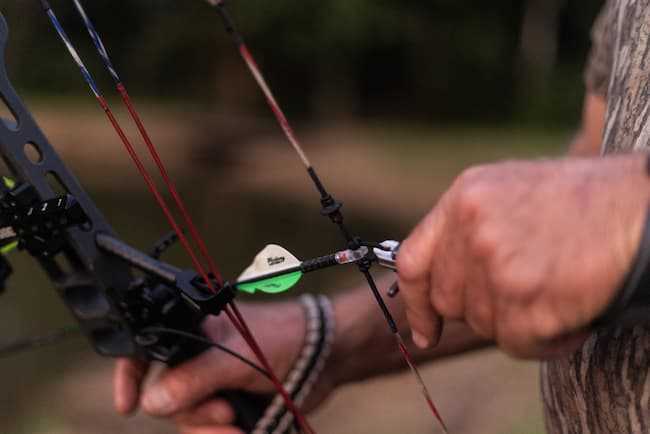
I once chatted with a retired pro athlete who casually mentioned he draws 90 pounds on his hunting bow. For the whitetails he’s typically chasing, this could be overkill. So what’s the sweet spot for the average bowhunter pursuing North American big game?
Like most issues, this one is a bit subjective. Your intended game, shot distance, draw length, and other equipment all play a role in determining optimal draw weight.
But with proper placement, most bowhunters can get away with the 30- to 40-pound minimums required by many state agencies for up to deer-sized game. Stalking elk, moose, or bear? You’ll probably want to crank it up a notch and shoot for 50 to 60 pounds.
If you’re smaller-framed, new to bowhunting, nursing an injury, or just generally pulling on the low end, consider these tips:
- Keep shots close: Arrows lose speed and power at longer distances, so stick to closer-range shots within 30 yards.
- Opt for heavier arrows and fixed-blade broadheads: Both penetrate better than their counterparts, making them great choices for lower-poundage bows.
- Get in lots of practice reps: No matter the draw weight, shot placement is critical to a quick, ethical kill. Practicing at least a few times a week can increase accuracy. And don’t let up during hunting season.
- Build your strength: If you want to bump up your draw weight, perform exercises that target the muscles used when drawing a bow.
- Opt for a bow with adjustable draw weight: Rather than buying a new bow every time you’re ready to move up to a new weight class, choose one that offers adjustability and can grow with you.
- Check regulations: Draw weight minimums vary from state to state and among species. Always confirm with your state agency for the most up-to-date requirements.

The Bow Bully,
Long ago, I read about that guy Ishi, the last of the Yahi tribe, and I thought I saw it mentioned that his bow only had a draw weight of 33 pounds, yet he’d killed boatloads of animals with it. Yet I think he was also a proponent of the “get close, then sneak a bit closer” school of hunting. 🙂
Keep up the good work,
dave
A lot of hunters get hung up on draw weight when so many other things like shot distance come into play!
TBB,
“Casually” mentioning that you shoot a 90 pound bow is ego-talk, my reply to such a comment is “Cool, but can you hit anything?” or “Can you draw the bow while sitting in your stand?”
Think that many people are, to their detriment, over-bowed.
They buy the heaviest bow the can draw (must be a macho thing) standing in the bow shop wearing casual clothing.
Hunting is a totally different situation – try drawing the bow quietly, with minimum movement, from an awkward position, all bundled up in heavy clothing, when you are stiff and cold after sitting still on stand for a couple of hours with a nice buck standing 15 yards away… Good luck hitting a vital spot, there is no way the shot will be accurate with a heavy bow – forget about trying it at 30 yards.
People naturally take the easiest way and avoid work, seen that the higher the poundage the less likely they are to practice.
Just a thought – be realistic when choosing your bow. If you are a construction worker that gets lots of heavy exercise every day a 60 pound bow is likely not a problem, if you are an office worker a 60 pound bow is probably too heavy.
Heavier bows (besides being noisier) are more difficult to shoot beyond 30 yards where the power is (presumably) needed so the extra poundage is more a liability than a benefit.
IMHO, sub 60 pound bows are more than adequate for whitetails out to a reasonable (ethical) range of 30 yards. The local (Canadian) deer average 175-200 pounds and I typically get complete pass-through on a 20 yard broad-side shot with my 52 pound selfbow shooting a fixed blade broadhead.
My suggestion to put venisonin the freezer: use a reasonable weight bow, practice daily and learn to get closer than 25 yards.
Just my 2 cents.
Hank
Agree 100%
Completely agree! I get complete pass-throughs with my 50-pound bow